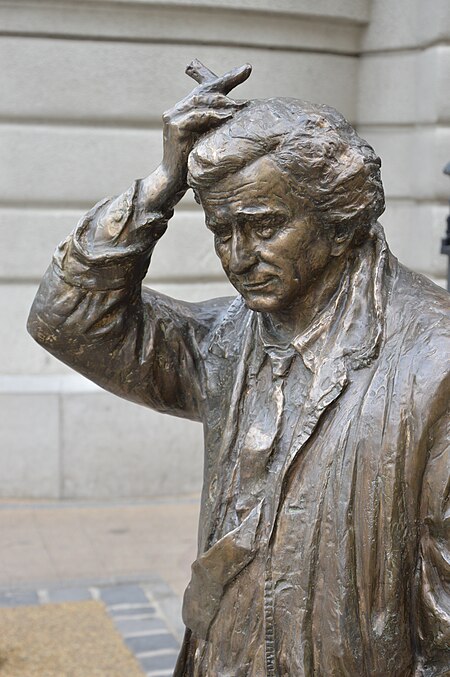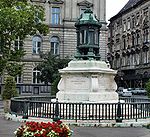Columbo statue (Budapest)
2014 sculpturesBuildings and structures in BudapestColumboMonuments and memorials in HungarySculpture stubs ... and 3 more
Sculptures of dogsStatues in HungaryStatues of fictional characters

The Columbo statue is a life-sized bronze work on Falk Miksa Street in Budapest depicting Peter Falk in the role of the fictional police detective Columbo. At the Columbo statue's feet is a statue of Columbo's dog, Dog. The statues, by the sculptor Géza Dezső Fekete, were put up in 2014 as part of a state-sponsored urban renewal project.Though Peter Falk and the street's namesake, 19th century Hungarian politician Miksa Falk, were both Jewish, and the actor Peter Falk had ancestors from Hungary, there is no known family relationship between them. The actor's Hungarian connection was not through the Falk family on his father's side, but through his maternal grandfather.
Excerpt from the Wikipedia article Columbo statue (Budapest) (License: CC BY-SA 3.0, Authors, Images).Columbo statue (Budapest)
Falk Miksa utca, Budapest Lipótváros
Geographical coordinates (GPS) Address External links Nearby Places Show on map
Geographical coordinates (GPS)
| Latitude | Longitude |
|---|---|
| N 47.51265 ° | E 19.04893 ° |
Address
Columbo
Falk Miksa utca
1055 Budapest, Lipótváros
Hungary
Open on Google Maps










